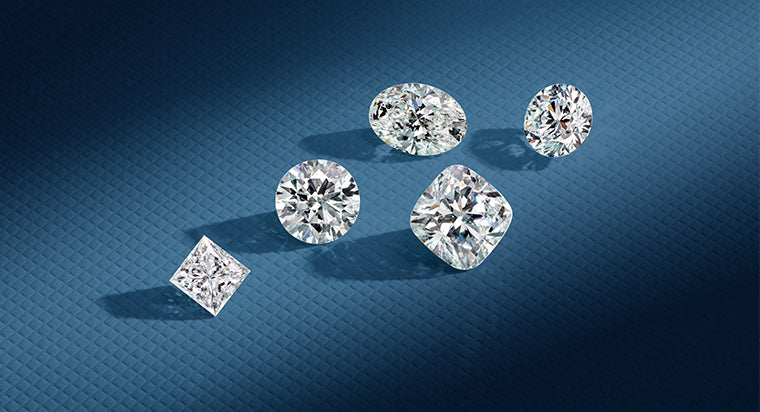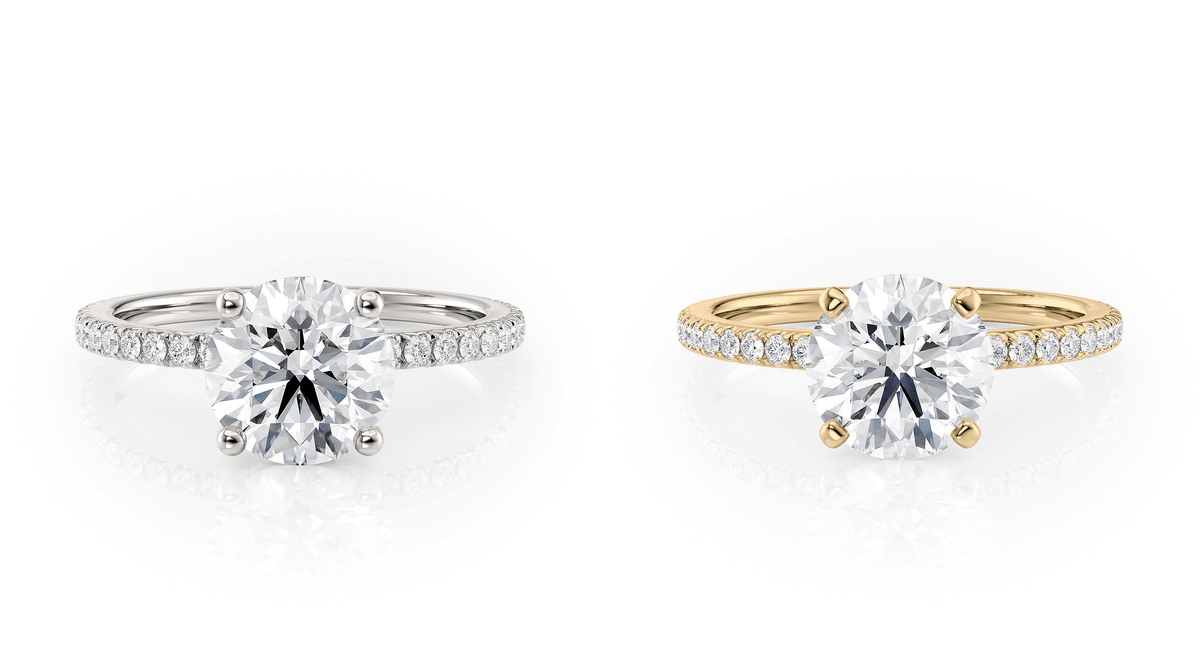When it comes to selecting the perfect engagement ring or fine jewelry, many buyers are now turning to platinum vs gold lab grown diamond rings due to their ethical appeal and environmental benefits. However, once you’ve decided on a lab-created diamond, another decision arises: should you choose platinum or gold for the band? Both metals are widely used in the jewelry industry, and each offers its own advantages when paired with lab-grown diamonds. In this article, we will explore the key differences between platinum and gold lab-grown diamond rings, helping you make an informed decision for your next purchase.
Table of Contents
ToggleWhat Are Lab-Grown Diamonds?
Before delving into the differences between platinum and gold, it’s important to understand the nature of lab-grown diamonds. Lab-created diamonds, also known as synthetic or man-made diamonds, are made through two distinct methods: High Pressure High Temperature (HPHT) and Chemical Vapor Deposition (CVD). These methods replicate the natural diamond formation process, but in a controlled environment. The result is a diamond with the same physical and chemical properties as mined diamonds but without the environmental and ethical concerns.
The popularity of lab-grown diamonds is on the rise, and it is no surprise. Not only are they more affordable than their natural counterparts, but they are also a more sustainable option, as their production doesn’t involve harmful mining practices. Now that we know more about lab-created diamonds, let’s compare the two most popular metals used for the rings that house these stunning stones: platinum and gold.
Platinum Lab-Grown Diamond Rings
Platinum is a luxurious and durable metal that has long been favored for engagement rings. When paired with a lab-grown diamond, platinum offers both beauty and strength. Platinum is known for its naturally white sheen, making it the ideal complement to the brilliance of a lab-created diamond. Additionally, platinum is hypoallergenic, making it a great choice for those with sensitive skin.
One of the standout features of platinum lab-grown diamond rings is their durability. Platinum is one of the strongest metals available, and it resists wear and tear over time. It doesn’t tarnish and will not lose its white color, making it an excellent long-term investment. Platinum also tends to be heavier than gold, which can give the ring a solid and substantial feel on the finger. However, platinum’s density can make it more expensive than gold, although it offers great value for those who prioritize quality and longevity.
In terms of maintenance, platinum requires less frequent cleaning than gold because it doesn’t tarnish. However, it may develop a patina over time, which some people find appealing as it adds character and uniqueness to the piece. If you prefer to maintain the ring’s high-shine appearance, periodic polishing will restore its luster.
Gold Lab-Grown Diamond Rings
Gold is another popular choice for lab-grown diamond rings, and it comes in several different colors: yellow gold, white gold, and rose gold. Each color offers a unique aesthetic that can complement different styles and personal preferences. For example, yellow gold lab-grown diamond rings exude a classic, timeless charm, while white gold offers a more modern and sleek look that pairs well with the brilliance of lab created diamonds. Rose gold, with its warm pinkish hue, has grown increasingly popular in recent years for those looking for a more romantic, vintage-inspired style.
Gold is a more affordable option than platinum, making it a great choice for those on a budget. However, gold’s malleability means that it is more prone to scratches and dents compared to platinum. Gold is also often alloyed with other metals to enhance its strength, so it may not be as pure as platinum. White gold, for instance, is typically coated with rhodium to give it its bright white color, but this coating can wear off over time, requiring periodic re-coating to maintain the ring’s appearance.
One of the key benefits of gold lab-grown diamond rings is their versatility. Whether you prefer a soft, classic look or a bold, modern statement, gold can be easily shaped and customized to meet your design needs. Additionally, gold rings are lighter in weight than platinum, which some people find more comfortable to wear.
Durability and Maintenance: Platinum vs Gold
When considering durability and long-term maintenance, platinum has the edge over gold in many ways. As mentioned, platinum is a more durable metal, meaning that it will withstand daily wear better than gold. It is less likely to scratch and retains its appearance for many years. However, platinum is not completely impervious to wear. Over time, it may develop a natural patina, which some people prefer but others may not. Regular polishing can keep the ring looking brand new, but this may be something to consider if you prefer a high-maintenance ring.
Gold, on the other hand, is more prone to scratching and denting, especially when it is alloyed with softer metals. However, with proper care, gold rings can last for many years. If the ring’s appearance begins to fade, it can be refinished and re-coated to restore its original shine. The ease with which gold can be polished and maintained also contributes to its popularity, particularly in the case of white gold, which is re-coated with rhodium to ensure it remains bright.
Aesthetic Appeal: Platinum vs Gold Lab-Grown Diamond Rings
The choice between platinum and gold largely comes down to personal preference in terms of appearance. Platinum lab-grown diamond rings are known for their luxurious and timeless appeal. The naturally white metal complements the brilliant sparkle of a lab-grown diamond, creating a sophisticated look that is ideal for those who want a classic, high-end feel.
Gold, with its variety of color options, offers more versatility in terms of aesthetic choices. Yellow gold has a warm, vintage vibe, while white gold provides a sleek and modern finish. Rose gold offers a romantic, feminine touch. Ultimately, whether you choose platinum or gold, your lab-grown diamond ring will shine beautifully, but the choice of metal can significantly impact the overall look.
Conclusion
Choosing between platinum and gold lab-grown diamond rings depends on your priorities, preferences, and budget. If you value durability, longevity, and a classic appearance, platinum may be the better choice for you. On the other hand, if you’re looking for a more affordable option with customizable aesthetics, gold offers excellent versatility. Whichever metal you choose, both platinum and gold complement the beauty of lab-grown diamonds and can provide you with a stunning piece of jewelry that will last a lifetime.




